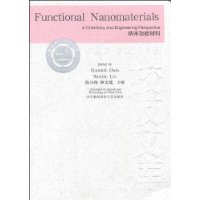本书包括4个部分。第1部分(第1至5章)介绍了多种纳米功能材料(如纳米线、纳米颗粒)的制备、处理、功能化与表征。材料制备是实现材料应用的一个重要环节。第2部分(第6到10章)侧重于纳米材料的电子转移性能以及在纳米电子器件和分子电子器件上的重要性。第3部分(第11到13章)总结了近年来纳米功能材料在能源研究上的一些进展(如太阳能、燃料电池)。第4部分(第14到16章)介绍纳米材料在生物标定、检测和敏感器件中的应用。
本书可作为从事纳米材料及其相关领域科研人员的技术参考资料,也可以作为高年级本科生和研究生相关课程的辅助读物。
插图:

I Introduction
Nanocrystals are clusters of hundreds to hundred thousands of atoms withsizes from several to several hundred nanometers. Semiconductor nanocrystalsexhibit interesting size and shape dependent properties. 1-3 Due to its smallsize, a large fraction of atoms in nanocrystal are located on the surface. Manyphysical properties of nanocrystals, such as melting point and phase transitionpressure, are affected by this surface effect. In addition, the electronicstructure of nanocrystal is quite different from that of the bulk. Similar to thebulk, the electronic structure of semiconductor nanocrystals consists ofconduction band and valance band, separated by a band gap. However, thereare also discrete energy levels near the band edge, a feature otherwise onlyfound in molecules and atoms. Due to the quantum confinement effect, theband gap of semiconductor nanocrystals generally increases as its sizedecreases. Depending on the shape of the nanocrystal, the quantumconfinement can be 3D (quantum dot), 2D (quantum rod), or 1D (quantumwell) (Figure 1).4
Figure 1. Left: Density of states of bulk semiconductor, semiconductor nanocrystal and atom. Right: Density of states in bulk semiconductor, quantum well, quantumrod, and quantum dot. (Reproduced with permission from Ref. 4. Copyright 1996
American Chemical Society)
Size and shape are two of the most important parameters in defining theelectrical and optical properties and hence applications of nanocrystals.

